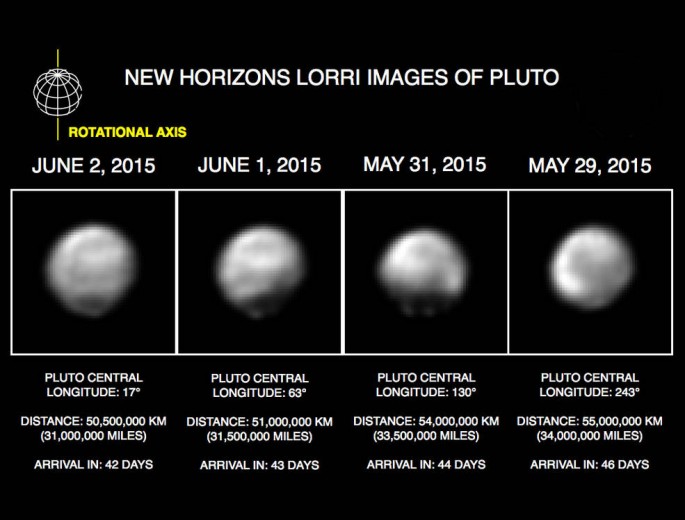NASA's New Horizons spacecraft is about 24 million miles away or an estimated more than a month away from Pluto which marks the first time that a probe will ever explore the dwarf planet, revealing its complex surface.
According to the mission's principal investigator, Alan Stern from the Southwest Research Institute, Pluto revealed a never before seen surface that possesses solid evidence for discrete equatorial bright and darker regions and various degrees of brightness.
The new series of photos also reveal the different faces of Pluto that where its northern hemisphere shows some darker regions and terrains. Stern also says that this darker and brighter regions only occur in the equator of the dwarf planet or just south of the equatorial region which is proving to be a new puzzle.
The last series of photos that was taken between May 29 and June 2 have shown a bright region in one of the polar regions of Pluto where the team suspects to be polar ice caps. The images also suggest that Pluto's overall shape could also be non-spherical but this is just created by an illusion due to intensive image processing and the overall surface brightness of the dwarf planet.
New Horizons is set to arrive at Pluto on July 14 with a milestone flyby where it will capture better images with its camera, the Long Range Reconnaissance Imager (LORRI) as the probe continuously sends a barrage of raw images.
NASA also just released a schedule to watch the very first Pluto approach of New Horizons' epic flyby next month. The first broadcast will be on June 16 at 11:30 A.M. ET on NASA TV which will follow a weekly update from then on for June 23 and June 30 at the same time and date.
Mission updates from New Horizons will also commence on a daily basis that will begin on July 7 at 11:30 A.M. ET where there will be extended briefings on July 13 which is the day before its first flyby of Pluto.
There will also be a live coverage on NASA TV when New Horizons conducts its first approach on Pluto that will begin at 7 A.M. ET where the exact flyby moment will occur at 7:49 A.M. on July 14 however, since Pluto is 3 billion miles away from Earth, there will be a delay of four and a half hours before New Horizons transmits its flyby images back to mission control.
Apart from this live broadcast on NASA TV, there will also be a special showing of "Phone Home" which is the live feed from New Horizons that will be shown from the Johns Hopkins University Applied Physics Laboratory on July 14 at 8 P.M. ET.



























